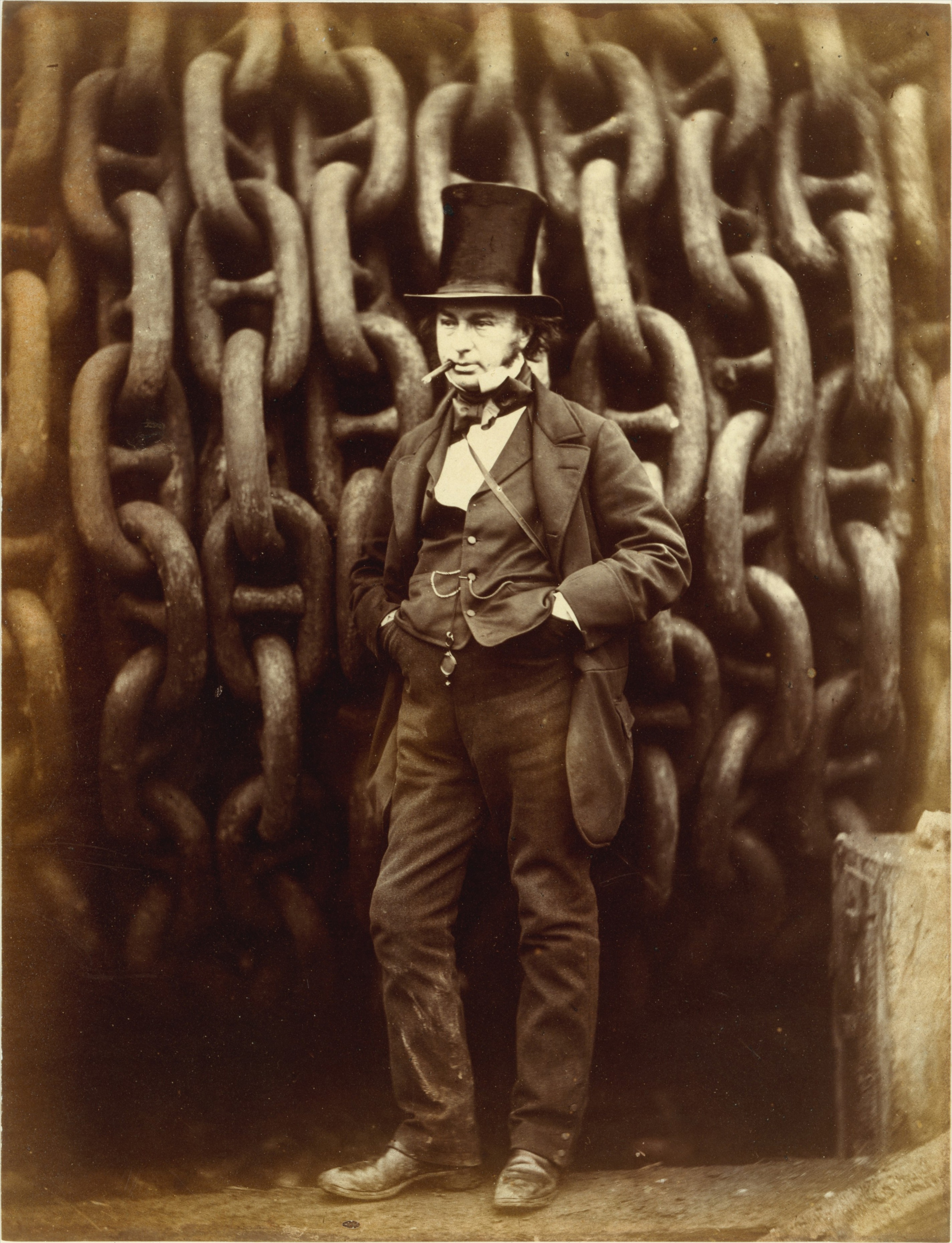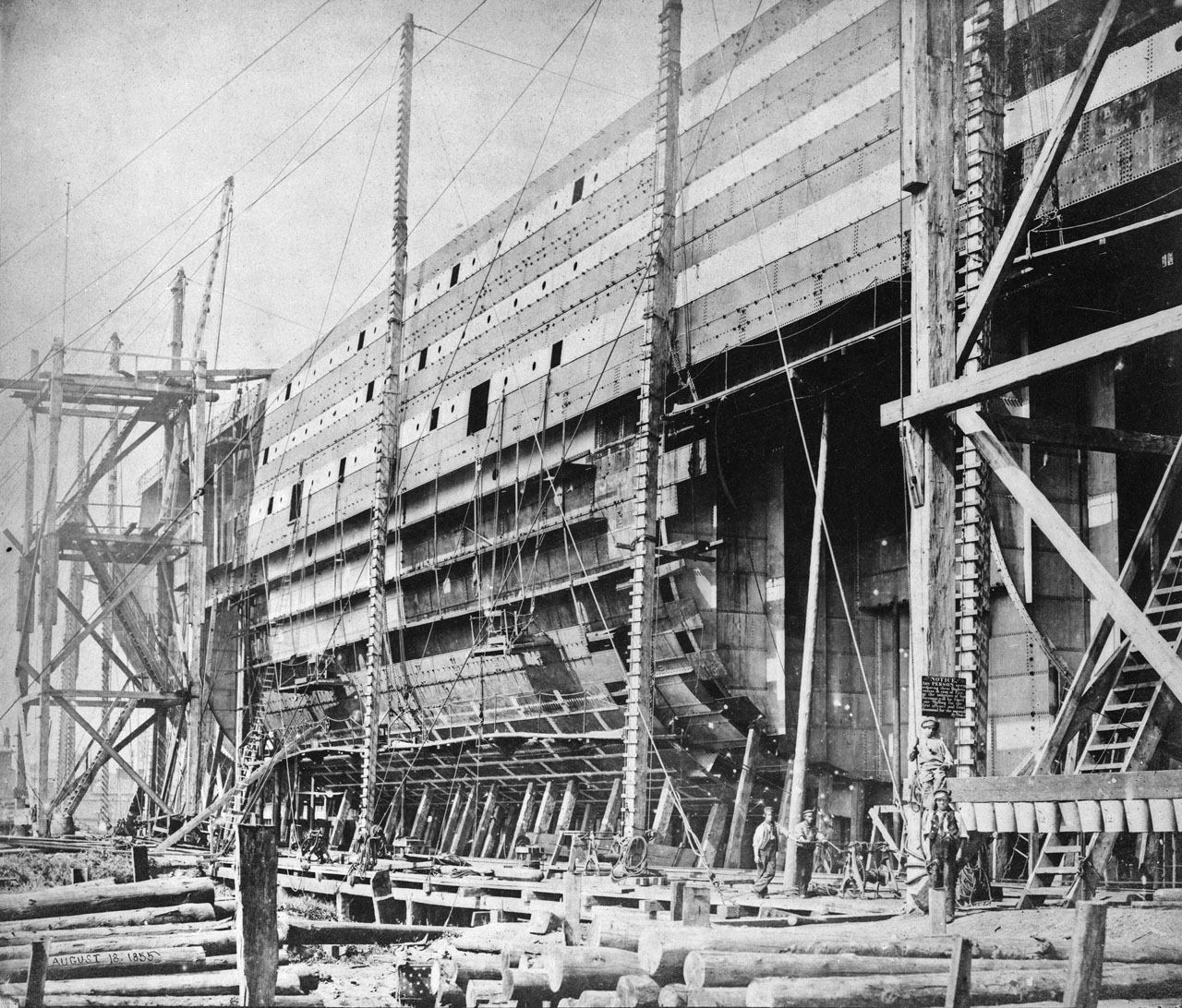In 2002, the BBC conducted a poll of the ‘100 Greatest Britons’. While there can be few eyebrows raised at the winner – statesman Winston Churchill – to have an engineer sit in second place, above the likes of William Shakespeare, Captain James Cook and Queen Victoria, seems to say something about just how highly the British prize their Industrial Revolution heroes. The engineer in question was Isambard Kingdom Brunel.

These days, Brunel’s fame is greater than our knowledge of his achievements. While those within the engineering community will know that he designed the Clifton Suspension Bridge, Paddington Station and iron transatlantic ships, it’s unlikely that those outside will remember Brunel as the man behind the Great Western Railway, and even a hospital in the Crimea that was to establish the blueprint for how field medical facilities are built to this day.
Isambard Kingdom Brunel was born in Portsmouth on 9th April 1806 during the reign of George III, shortly after the creation of the United Kingdom of Great Britain and Ireland. It was a time of social and political unrest across Europe, with Brunel’s father, French civil engineer Marc Isambard Brunel (a royalist sympathiser) forced to escape the French Revolution by fleeing to the United States, while his mother Sophia Kingdom was arrested as an English spy during the Reign of Terror. The couple were eventually reunited in England where they started a family shortly after the turn of the century. Their son was named Isambard, a Germanic name of Norman origin meaning ‘iron-axe’.
READ ABOUT MORE LATE GREAT ENGINEERS
By the time Brunel junior was eight years old, he was fluent in French and familiar with Euclidian geometry. Following a stint at boarding school in Hove (where he learned classical languages), he continued his education at Lycée Henri-IV (now the University of Caen Normandy) in Paris while his father languished in debtor’s prison with a liability of £5000. On graduating, Brunel studied as an apprentice to the leading clock maker Abraham-Louis Breguet, after which he returned to England in 1822. His first appointment was with his now released father, working as assistant engineer on a River Thames tunnel project to connect Rotherhithe with Wapping, during which time he was nearly killed in a flooding incident. The tunnel eventually became part of the London Underground and remains in use today.
Although his public recognition rests heavily on one of the most significant feats of Victorian bridge building, the idea that Brunel designed the Clifton Suspension Bridge is contested. It is a matter of record that Brunel submitted four designs for the bridge (all of which were rejected by the ‘Colossus of Roads’ Thomas Telford in favour of one of his own designs). It is also beyond doubt that further designs by Brunel eventually won a competition (and more importantly, public opinion) to reinstate him as the designer. But the bridge itself, that would not be completed until 1864 (five years after the engineer’s death), substantially differs from Brunel’s original vision. Less controversial are the Hungerford Bridge – a suspension footbridge close to Charing Cross station in London – the Royal Albert Bridge in Saltash near Plymouth, the Somerset Bridge, the Windsor Railway Bridge and the Maidenhead Railway Bridge, the last of which was the widest brick arch bridge in the world and is still in service, despite today’s trains being ten times heavier than they were in Brunel’s time.
By 1833 Brunel was chief engineer of the Great Western Railway, a company that had been founded to reinforce Bristol’s prominence as Britain’s second port and primary point of departure for merchant trade to America. Brunel’s largest project to date, the London-Bristol line received its enabling Act of Parliament in 1835, with the first trains running in 1838. Brunel chose a 7 ft (2,134 mm) ‘broad gauge’ for his railway, based on his calculations and trials for stability and comfort at high speed (later increasing this by a quarter of an inch to reduce friction in the wheel sets while negotiating curves). But with the Birmingham and Gloucester railway operating on a 4 ft 8 1⁄2 in (1,435 mm) standard gauge, the ensuing incompatibility meant that passengers travelling from south to north needed to change trains to continue their journey. The so-called ‘gauge war’ led to the appointment by Parliament of the Gauge Commission that reported in favour of the standard gauge and, apart from exceptions made for parts of the GWR, the broad gauge was phased out entirely.
The gauge war has done little to overshadow Brunel’s achievement in designing the Great Western Railway’s London terminus at Paddington. Influenced by Joseph Paxton’s Crystal Palace that housed the Great Exhibition of 1851, it remains one of the capital’s most important stations and, despite being extended and rebuilt after sustained bombing throughout the Second World War, is still recognisable as Brunel’s design. A life-size bronze statue of Brunel by John Doubleday is located between Platforms 8 and 9. The same sculptor has a standing statue of Brunel in Bristol, at the other end of the line.
One of Brunel’s lesser successes was his ‘atmospheric railway’. The ‘vacuum traction’ system was intended to provide an alternative to steam power, in which locomotives were propelled along the track by means of a continuous jointed cast iron slotted pipe that lay between the rails connected to a pumping station, with pressure maintained by a longitudinal leather flap along the slot. The patented system came from shipbuilders and engineers Joseph and Jacob Samuda who, along with gas engineer Samuel Clegg, were able to produce encouraging tests in London. When put in practice on a section of the South Devon Railway, there were reliability problems with the seals and valves. The whole enterprise is described in ‘The Iron Road: The Illustrated History of Railways’ as an ‘expensive flop.’

Brunel’s vision for the Great Western Railway had always been to extend Britain’s rail network across the Atlantic Ocean to America via a sea route from Bristol to New York. The technical issue facing Brunel in the mid 1830s was based on the assumption that ships powered purely by steam weren’t capable of making commercially viable voyages of such magnitude. It was a matter of practicality, as the fuel required would take up all the space available in the cargo hold. However, Brunel managed to prove that while the amount of cargo a ship could carry increased by the cube of its dimensions, the resistance it experienced only increased by the square. The implications were obvious: the bigger the ship, the less fuel proportionally required. Brunel offered his services to the Great Western Steamship Company pro bono and was rewarded with the commission to design their first vessel, the Great Western, a predominantly wooden craft with steam-powered paddle wheels, the longest ever built at 236ft (72m). The ship went into regular service – 64 crossings between 1838 and 1846 – and was so successful that Brunel was asked to design another.
Great Britain was even bigger at 322ft (98m). But, more significantly, was propeller-driven and built of metal: as such, widely regarded at the first modern ship. Success was short-lived, with Great Britain meeting misfortune only one year into service, when it ran aground off the coast of Ireland due to navigation error. It was subsequently sold for salvage and is now a ship museum in dry dock in Bristol. The third of Brunel’s ships – the Great Eastern – was larger still, carried a complement of 4,000 passengers and was capable of cruising from London to Sydney and back without refuelling. The ship failed to become commercially successful as a passenger vessel and was repurposed as a sub-oceanic telegraph cable-layer, so playing a role in opening up telecommunications between Europe and North America.
While Brunel was working on the Great Eastern, Florence Nightingale was tending the military sick and wounded of the Crimean War at the British Army Hospital at Scutari, notorious for its unsanitary conditions that caused outbreaks of cholera, dysentery, typhoid and malaria. Nightingale wrote to the Times to force the government to provide a solution. The task was handed to Brunel, who in the space of five months managed to assemble a team to design, build and ship a pre-fabricated complex of wood and canvas buildings to the Dardanelles in 16 ships. The resulting hospital at Renkioi was an overwhelming success, with a 90 percent improvement on patient recovery compared with Scutari.
Brunel died on 5th September 1859 at the age of 53, shortly after the ill-fated maiden voyage of the Great Eastern, during which it was extensively damaged by an explosion.
https://www.theengineer.co.uk/september-1859-brunels-obituary/





Glasgow trial explores AR cues for autonomous road safety
They've ploughed into a few vulnerable road users in the past. Making that less likely will make it spectacularly easy to stop the traffic for...